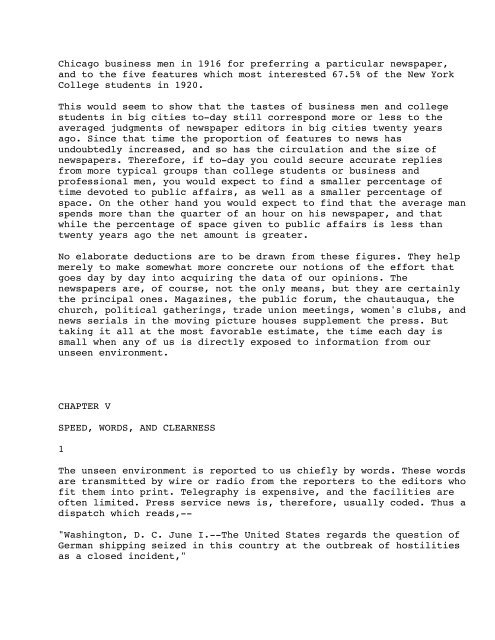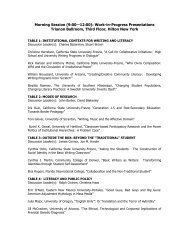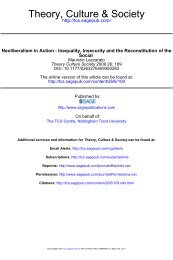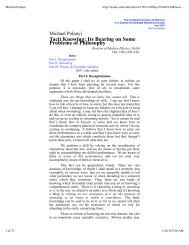PUBLIC OPINION by WALTER LIPPMANN TO FAYE LIPPMANN ...
PUBLIC OPINION by WALTER LIPPMANN TO FAYE LIPPMANN ...
PUBLIC OPINION by WALTER LIPPMANN TO FAYE LIPPMANN ...
You also want an ePaper? Increase the reach of your titles
YUMPU automatically turns print PDFs into web optimized ePapers that Google loves.
Chicago business men in 1916 for preferring a particular newspaper,<br />
and to the five features which most interested 67.5% of the New York<br />
College students in 1920.<br />
This would seem to show that the tastes of business men and college<br />
students in big cities to-day still correspond more or less to the<br />
averaged judgments of newspaper editors in big cities twenty years<br />
ago. Since that time the proportion of features to news has<br />
undoubtedly increased, and so has the circulation and the size of<br />
newspapers. Therefore, if to-day you could secure accurate replies<br />
from more typical groups than college students or business and<br />
professional men, you would expect to find a smaller percentage of<br />
time devoted to public affairs, as well as a smaller percentage of<br />
space. On the other hand you would expect to find that the average man<br />
spends more than the quarter of an hour on his newspaper, and that<br />
while the percentage of space given to public affairs is less than<br />
twenty years ago the net amount is greater.<br />
No elaborate deductions are to be drawn from these figures. They help<br />
merely to make somewhat more concrete our notions of the effort that<br />
goes day <strong>by</strong> day into acquiring the data of our opinions. The<br />
newspapers are, of course, not the only means, but they are certainly<br />
the principal ones. Magazines, the public forum, the chautauqua, the<br />
church, political gatherings, trade union meetings, women's clubs, and<br />
news serials in the moving picture houses supplement the press. But<br />
taking it all at the most favorable estimate, the time each day is<br />
small when any of us is directly exposed to information from our<br />
unseen environment.<br />
CHAPTER V<br />
SPEED, WORDS, AND CLEARNESS<br />
1<br />
The unseen environment is reported to us chiefly <strong>by</strong> words. These words<br />
are transmitted <strong>by</strong> wire or radio from the reporters to the editors who<br />
fit them into print. Telegraphy is expensive, and the facilities are<br />
often limited. Press service news is, therefore, usually coded. Thus a<br />
dispatch which reads,--<br />
"Washington, D. C. June I.--The United States regards the question of<br />
German shipping seized in this country at the outbreak of hostilities<br />
as a closed incident,"





